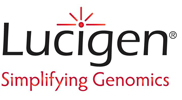
OptimizePCRamplificationoflongDNAampliconsupto40kb
 Fast,simpleoptimizationstartingwiththecompletekit
Fast,simpleoptimizationstartingwiththecompletekit- EasilyamplifyDNAtargetsupto40kblong
- ReducePCR-inducederrorsintheselongampliconswiththishighfidelityDNApolymerasemix
TheMasterAmp™Extra-LongPCRKitisacompletesystemforsuccessfulandaccurateone-stepamplificationofDNAsequencesupto~40kb.ThekitcontainstheMasterAmp™Extra-LongDNAPolymeraseMix,aswellasnineMasterAmpExtra-LongPCR2XPreMixeswithdNTPs,buffer,andvaryingamountsofMgCl2andtheMasterAmpPCREnhancerwithBetaine.*
Werecommendfirstusingthecompletekit(Cat.No.MHF9220)totestthedifferentMasterMixExtra-Long2XPreMixes(Step1,Fig.1)witheachnewtemplateandprimersettoidentifythebestperformingone.OnePreMixwillamplifyyourlongtemplateandgiveconsistentresultsinallsubsequentamplifications(Step2,Fig.1).OncetheoptimalPreMixisidentifiedcontinuetousethatcombinationofMasterAmpExtra-Long2XPreMixandDNAPolymeraseforallsubsequentamplificationsusingthattemplateDNAandprimerset.
| Figure1.TwostepstoreliableandconsistentPCRresults. | |
| STEP1.FindtheoptimalMasterAmp™Extra-LongPCRPreMix.PerformPCRwithyourtemplate,primers,andtheninePreMixes. | STEP2.UsethesameMasterAmp™Extra-LongPCRPreMixtoobtainreliable,consistentPCRofthesamesequence. |
 |  |
| A.Amplificationofa20-kbregionoflamBDaDNAusingMasterAmp™Extra-LongPCR2XPreMixes(1-9).MasterAmp™Extra-LongPCRPreMix4producedoptimalresults. | B.SubsequentPCRofa20-kblambdaDNAregionwiththesameprimerpairandMasterAmp™PreMix4gaveconsistentresults,usingtheoptimalPreMixdeterminedinStep1. |
 | Figure2.Extra-longamplificationoflambdaDNAusingtheMasterAmp™Extra-LongPCRKit.PCRconditionswereoptimizedandMasterAmpPremix4wasselectedforPCRof1ngoflambdaDNAineachsample.Resultswereanalyzedona0.5%agarosegel.Ampliconsizeswere30kb(lane1),35kb(lane2)and40kb(lane3).LaneM,5-KbDNAladder. |
*Coveredbyissuedand/orpendingpatents.
MasterAmp™Extra-LongPCRKit;Purchaseofthisproductincludesanimmunityfromsuitunderpatentsspecifiedintheproductinserttouseonlytheamountpurchasedforthepurchaser"sowninternalresearch.Nootherpatentrights(suchas5´NucleaseProcesspatentrights)areconveyedexpressly,byimplication,orbyestoppel.FurtherinformationonpurchasinglicensesmaybeobtainedbycontactingtheDirectorofLicensing,AppliedBiosystems,850LincolnCentreDrive,FosterCity,California94404,USA.
ebiomall.com






>
>
>
>
>
>
>
>
>
>
>
>
还需要反转录用的引物、定量PCR用的一对引物、荧光信号源(荧光染料或荧光标记的探针,看你用什么策略来做定量PCR)
报价要看你需要服务商提供什么服务,如果你只提供实验材料,要求服务商做以上全部工作,只检测一个指标(一个基因的表达水平变化),价格大约每个样品350-500元,多一个指标大约多90元。
一般至少做一组数据两个样品嘛,所以你按1000块一组样品预算吧。
PCR(聚合酶链式反应)是利用DNA在体外摄氏95°高温时变性会变成单链,低温(经常是60°C左右)时引物与单链按碱基互补配对的原则结合,再调温度至DNA聚合酶最适反应温度(72°C左右),DNA聚合酶沿着磷酸到五碳糖(5'-3')的方向合成互补链。
恒温PCR和实时荧光定量PCR的不同,是不同在实时荧光定量PCR的系统中加入了荧光染料(SYBR Green 或Taqman 探针等等)。以SYBR Green为例,这种染料可以结合在双链的DNA上,当PCR不断进行时,每一次退火生成的双链DNA也在增加,荧光染料结合也越多,荧光也越强。在机器中有一个探测荧光的探头,可以定量检测荧光的强度,转换成数值。这样就可以实时记录反映体系中DNA的反应情况。
荧光PCR更有优势,因为荧光PCR灵敏度高于恒温PCR,同样价格也高一些。
如果要测量细胞表面2个受体的比率,最好用流式细胞仪来测量
荧光定量PCR较普通PCR不同的一点就是可以实时检测PCR扩增产物,从而可进行绝对定量或者相对定量。
一般有ROX Reference Dye和ROX Reference Dye II两种,针对不同的PCR仪.一般ABI PRISM 7000/7700/7900HT和7300 Real-Time PCR System使用ROX Reference Dye,而7500 Real-Time PCR System和7500 Fast Real-Time PCR System使用ROX Reference Dye II.其它牌子如Thermal Cycler Dice Real Time System、LightCycler 等Real Time PCR扩增仪时不必使用.









